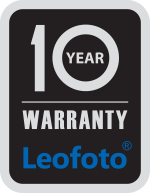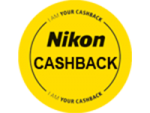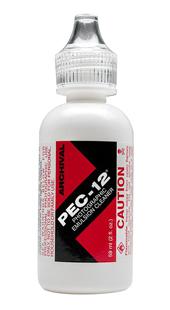|
PHOTO-SOLUTIONS PEC-12 dropper 2oz(59ml) cleaner (58-PECBTL)
PEC-12, Photographic Emulsion Cleaner is available in a 2 oz dropper tip bottle and in a 32 ounce refill container. details are at https://photosol.com/pec-12-faq/ Since 1983, PEC-12, Photographic Emulsion Cleaner has been trusted by the world’s most prestigious photographers, labs, museums and publishers. Not only has PEC-12 saved many of their most valuable images; it is the ONLY archival cleaner available. What good is cleaning an image only to have the emulsion slowly deteriorate over time? PEC-12 is a non-water based film and print cleaner which removes virtually all non-water based stains from color and B&W slides, negatives and prints. In many cases, PEC-12 removes grease pencil, adhesive residue, finger oils, ball-point pen, fungus, smoke & soot damage, laser separation oil and most permanent inks. PEC-12 contains no water; therefore, it dries instantly with no emulsion swelling and leaves no residue. PEC-12 is available in a convenient 4 ounce pump-spray bottle and a 32 ounce refill. Complete details and instructions are provided at time of purchase and a demonstration video can also be viewed on our site (PEC-12 Demonstration).
PEC-12 is designed to remove non-water based stains, grease and inks from photographic emulsions and bases. It removes finger oils, grease pencil, adhesive tape residues, mildew, smoke and soot damage, gold foil stamp and most ball-point and permanent inks. It will aid in the removal of firmly affixed adhesive tape. Graphic arts applications include the easy removal of wax and rubylith. How safe is PEC-12 ? Like most solvents, PEC-12 is flammable. It must be kept away from open flames and sparks. Do not use in any areas which lack adequate ventilation. Individuals with asthma or other breathing difficulties should avoid inhaling PEC-12 or any solvent vapors. While excessive inhalation may cause dizziness and nausea, a headache will be experienced long before these more serious symptoms occur. At the first sign of a headache, discontinue use and seek fresh air. A headache is also an indication that the ventilation in use is inadequate for ANY darkroom use! PEC-12 is hygroscopic. It will absorb moisture from the air if left uncapped. This will be evident if PEC-12 begins to wet and swell an emulsion. Discard immediately, by placing the open container outside until it has evaporated. Because PEC-12 is effective at removing finger oils from photographic emulsions, it is only natural that it will dissolve these oils from your skin! This can cause irritation and rashes in individuals with sensitive skin but otherwise will cause only mild dry skin after continued and prolonged exposure. Those with chronic skin conditions, such as eczema should avoid direct contact with PEC-12 for this reason. It will sting open cuts or abrasions. A good quality plastic examination glove should be worn to avoid skin contact should any difficulty be experienced. What can PEC-12 be used on? PEC-12 will damage certain materials such as non-hardened gelatin or albumen emulsions and many dye-sublimation materials. Care should be taken whenever using this product on a print or film of unknown nature, including older B&W and newer B&W processed by “Fine Art” photographers. A safety test should be done on each print or film emulsion as described under the heading “When NOT to use PEC-12″. When to use PEC-12? PEC-12 should be used sparingly; a little bit goes a long way. In most cases, there is no need to spray it directly onto the photo or film. Spray a drop or two onto a PEC*PAD, cotton swab or pad. Don’t drench the applicator with PEC-12 which will waste the solution and will not increase effectiveness. If excessive amounts are applied to an emulsion, there may be a white haze left on the surface when the PEC-12 evaporates. The haze is not harmful and can be easily removed by using a new applicator with less PEC-12. (The haze doesn’t generally appear on prints, and if it appears on a slide/negative, it won’t generally print.) For working on larger films or prints, use the larger size PEC*PAD or similar applicator. When using a PEC*PAD, simply wipe it across the film/print. (See the PEC*PAD specifications for complete instructions.) If using other applicators wipe the film lightly, turning the applicator to carry away the grime and bring clean PEC-12 to the emulsion. These other applicators will also require a final wipe with a clean applicator lightly moistened with PEC-12 to remove any lingering residue. The pad itself should look clean after this last application. In some instances, with slide or negative films, one may notice a slight coloring usually magenta (prints) or yellow/green (slides) being removed from the film and discoloring the applicator. This occurs because during processing the final wash tank was not supplied with adequate fresh running water allowing chemical carryover contamination. Any film passing through this wash is thus “contaminated” with residual chemicals. PEC-12 is removing this residual contamination from the film and actually improving image quality and permanence! PEC-12 dissolves only non-water based stains. If it is going to work on a particular stain, it will do so immediately. If there is no immediate effect, DON’T apply any pressure to the print or film. That won’t work any better, and non-PEC*PAD applicators can scratch the image. An exception to this is cleaning adhesive residues, which may require several applications, a heavier dose of PEC-12, or a combination of both. But DO NOT RUB HARD in attempting removal. When cleaning anti-scratch laser-separation oil, use PEC*PADs to remove any excess before applying PEC-12. The preferred method for cleaning film of these contaminants is to pour an ounce or so of PEC-12 into a very small tray or Petri dish. Immerse the film completely in the PEC-12, agitate LIGHTLY, and remove it after a few seconds. CAUTION: Films immersed in PEC-12 for extended periods (several hours or more) may develop an excessive reverse curl. This method should also be used when removing lacquer from film (such as found on Kodachrome processed before 1970 ). Repeat this process of soak/agitate/wipe until all the oil, lacquer or adhesive has been removed. When the film dries there will remain the haze that results from over-application of PEC-12, which can be wiped off with a PEC-12 treated PEC*PAD. You can save the PEC-12 from this dish for future use (in cleaning the same contaminant) in a separate bottle. NEVER put used PEC-12 back into a container with unused PEC-12. PEC-12 is an excellent solvent for removing non-water-based inks and retouching dyes. Before applying it to a print or film, determine that the underlying work surface is not covered with paint or inks which are soluble in PEC-12. For example, the printed colors and text on most photographic film or paper boxes will dissolve in PEC-12; they could be picked up by stray solvent and stain the photo being cleaned. It’s safest to work on an un-dyed and unpainted work surface when cleaning a film or print with PEC-12. Sheets of clean, white, acid free paper or museum board are ideal. PEC-12 will remove retouching colors if they are oil-based, and will have a minimum effect on water-based retouching dyes by removing only whatever dyes may be on the surface. You might consider a switch to pens and ink pads which are removable by PEC-12. Throw out any pens and ink pads which cannot be removed by PEC-12. This will provide a safe and reversible means to mark prints/film and insure against accidental, permanent damage. (Should a customer bring in a stained print or film, PEC-12 may remove it if the stain isn’t water-based. If you can clean it, you’re a hero, if you cannot, the stain wasn’t your fault to begin with.) This is why it’s important to use only inks you know are PEC-compatible. Ink manufacturers may periodically reformulate their inks, so test your pens and pads regularly to make sure they are still PEC-compatible before marking up a job. When NOT to use PEC-12: Neither albumen nor unhardened gelatin is commonly found in modern silver halide based films or papers, although they may occur in older or ‘alternative’ processes. In any such cases where doubt exists, test PEC-12 on an unimportant corner of it, preferably outside of the image area (border). Dab the border with a corner of a PEC*PAD which has been lightly moistened with a small amount of PEC-12. If the solution is going to cause any damage, it will do so immediately by removing the emulsion at that point and create a stringy egg-white-like blob as the PAD is pulled away from the print. If the emulsion is not damaged after a light wipe, PEC-12 will be safe to use. It is important to note that any damage will occur IMMEDIATELY on contact – DO NOT RUB HARD as that WILL cause permanent damage! The only possible exception is with computer generated dye-sublimation prints, which may withstand an initial wipe with PEC-12, but will smear after a few seconds. It is best to avoid using PEC-12 on these types of prints because of the uncertainty. CAUTION: Several companies are selling products claiming to provide the same results as PEC-12, and are using very similar product names, packaging, and have even copied text from our brochure. DO NOT BE MISLED! We stand behind the quality of our product which was first used in 1971. After twelve years and extensive testing, PEC-12 was introduced commercially in 1983. Since then, it has been widely used and endorsed by some of the most respected names in the photographic industry (many of whom are listed in our product brochure). PEC-12 is also the ONLY cleaner tested by a leading image preservation research institute and their report clearly shows that PEC-12 causes no “major ill effects in the short term . . . or in the long term” under the conditions and with the materials tested (report available on request.) Can these other companies provide you with similar credentials? Traveling by air with PEC-12: On August 10, 2006, British authorities arrested a number of extremists engaged in a plot to destroy multiple passenger aircraft flying from the United Kingdom to the United States. Currently, there is no indication of plotting within the United States. We believe that these arrests have significantly disrupted the threat, but we cannot be sure that the threat has been entirely eliminated or the plot completely thwarted. For that reason, the United States Government has raised the Nation’s threat level to High, or Orange, for all commercial aviation operating in or destined for the United States. TSA continues to allow laptop computers, cell phones, and other electronic items as carry-on items. In addition to already prohibited items, due to the nature of the threat revealed by the U.K. investigation, on August 10, 2006, TSA banned all liquids, gels and aerosols at airport screening checkpoints and carried onboard aircraft. This ban has now been modified. There are two major changes: In addition, amounts larger that 3 oz. of prescription liquid medications, baby formula, breast milk, and diabetic glucose treatments must be declared at the checkpoint for additional screening. If the passenger fails to make this declaration, the item will likely be removed barring extenuating circumstances. Passengers should only carry-on medications that are required to be available during their itinerary. This includes items like gel filled freezer packs or non-prescription liquid or gel medications, such as saline solution or KY-Jelly, required for medical necessity. It is unlikely that additional changes in the liquid, aerosol and gel policy will be made in the near future. This security regime will apply to all domestic and international flights departing U.S. airports. Travelers should, however, check with transportation security authorities in their country-of-origin for information about security regimes at non-U.S. airports. No specifications for this product. No accessories for this product. |
  |
||||||
ECommerce Integration by Yart
(Packing, handeling and shipping charges have been incorporated in the cost of these goods)
Today we are offering free freight in Australia on this product.Small items will ship via Australia post. All other products will ship via road freight or local couriers.This is a limited offer and subject to change at any time.
For Lab service products the return post or freight has been incorporated in the price and for Drop box only services there is NO freight applicable.
Close


















